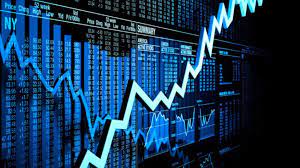
Cfd trading Essentials: A Comprehensive Guide for Investors
As an investor, you’re always looking for new and exciting ways to invest your money. One of the most popular methods is Contract for Difference (CFD) trading. Cfd trading allows investors to speculate on the prices of a wide range of financial instruments without owning them outright. This makes it a cost-effective and flexible investment option. However, before diving into Cfd trading, it’s important to understand the essentials. In this comprehensive guide, we’ll take you through everything you need to know about Cfd trading.
What are CFDs?
A Contract for Difference (CFD) is a type of derivative that allows investors to speculate on price movements in financial markets without owning the underlying asset. Instead, investors enter into a contract with a broker to exchange the difference in price between the opening and closing trades of an asset.
CFDs can be traded on various financial markets such as stocks, indices, commodities and currencies.
How do CFDs work?
Let’s say you want to trade Apple stock but don’t want to buy physical shares. You could instead open a CFD position with a broker at $100 per share. If after one week the price goes up by 5%, your profit would be $5 per share (excluding fees). On the other hand, if the price goes down by 5%, you would lose $5 per share.
Trading platforms usually offer leverage which means that you can control larger positions with less capital than required for traditional investments.
Benefits of Cfd trading
One major advantage of cfd trading is that they enable traders to go long or short on a market which means they can make gains from both rising and falling markets.
Additionally, they are more cost-effective than traditional investments since there are no fees associated with buying or selling physical assets.
CFDs also provide flexibility since they can be traded on margin, meaning that you only need a fraction of the total position value to open a trade.
Risks of Cfd trading
While Cfd trading has many benefits, it’s important to understand the risks involved. Since CFDs are leveraged products, losses can exceed your initial deposit. This means that traders can lose more than what they have invested.
Additionally, CFDs are not regulated in all countries which means there is no protection for traders if the broker goes bankrupt.
How to get started with Cfd trading
To start trading CFDs, you need to find a reputable broker and open an account. Most brokers offer demo accounts which allow you to practice trading without risking real money.
When selecting a broker, consider their reputation, fees and commissions charged as well as their regulatory status.
Once you’ve opened an account and funded it, you can start placing trades on various financial markets.
short:
In short, Cfd trading is a popular investment option for those who want to speculate on price movements without owning physical assets. It provides flexibility and cost-effectiveness but also carries risks such as high leverage and unregulated brokers. Before venturing into this type of investment, it’s important to understand how CFDs work and the risks involved. Find a reputable broker and practice with a demo account before committing real funds into your trades.